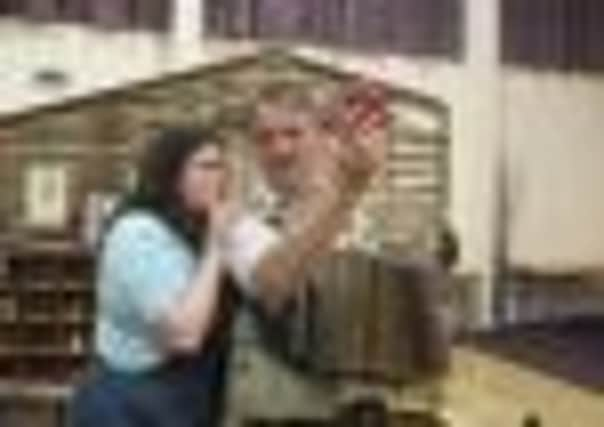Review: The Forgotten Orchard, John Hope Gateway, Botanic Gardens


These are just three of the names given to the over 200 varieties of Scottish apples.
Packed with facts though the Forgotten Orchard might be, it succeeds by putting its story and characters first. Caroline Mathieson is energetic and engaging as Katy who loves her food – and the memories which different foods bring back.
Advertisement
Hide AdAdvertisement
Hide AdSoon, she is talking of apples and the memories of her Granddad’s orchard. No sooner said than we are there, seeing the orchard through her eyes as a child. Stewart Ennis is Granddad, warm and friendly but slightly stern and aloof, tending his beloved orchard.
Katy’s education into the delights of real apples becomes the audience’s, through scenes of apple dunking and tomfoolery between the two.
The production of a trio of supermarket-bought uniform green apples provides the turning point. Suddenly there’s a purpose to Granddad’s playing around while his delight in the flavours and varieties can really shine.
Director and co-deviser Emily Reid focusses on information which youngsters will find most illuminating. So the fact that wild apples come from Kazakhstan is overtaken by the idea that their seeds were spread by camels pooing along the long road up to Scotland.
Advertisement
Hide AdAdvertisement
Hide AdWhen it comes to the naming of the apples, the company is equally aware of its young audience. A superb piece of Burnsian storytelling reveals the tale of an impoverished ploughman who was caught scrumping apples and killed.
According to the legend, the stolen fruit was thrown on the compost where an apple tree grew with blood-red skin and a sweet pink juice, and thus the Bloody Ploughman was named.
There is tricky stuff in there too – the process of grafting one kind of apple onto another’s stalk by Edinburgh’s James Grieve is even worked in – but it is all kept at a level that a child can easily grasp. And it’s all rather more entertaining than Victorian melodrama, to be honest.